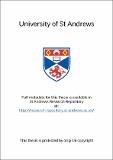Files in this item
Optimisation of performance of tin oxide based anodes for high energy density lithium batteries
Item metadata
| dc.contributor.advisor | Irvine, John T. S. | |
| dc.contributor.author | Attidekou, Pierrot S. | |
| dc.coverage.spatial | [16], 260 p. | en_US |
| dc.date.accessioned | 2021-04-05T09:53:11Z | |
| dc.date.available | 2021-04-05T09:53:11Z | |
| dc.date.issued | 2005-06-22 | |
| dc.identifier.uri | https://hdl.handle.net/10023/21769 | |
| dc.description.abstract | The goal of this work was to synthesise and investigate a tin based oxide compound, SnP₂O₇ and its doped analogues, as a potential negative electrode for lithium battery. SnP₂O₇ has two polymorphs: the cubic and the layered forms. It has been proven that the cubic form has a better performance on cycling compared to the layered. This work has focused on the cubic form in order to understand the mechanisms occurring upon charge and discharge in order to improve the capacity and the cycling ability. The achievement of this task requires several steps. SnP₂O₇ was synthesised and fully characterised structurally and electrochemically. The structural characterisation has elucidated the complexity of the material that crystallises in a 3x3x3 superstructure with the presence of nanodomains. Electrochemical characterisation has shown that on insertion of lithium into the material, finely dispersed tin nanoparticles are formed in an amorphous lithiated pyrophosphate matrix before the tin particles alloy with lithium providing the useful capacity of the battery. This material displays an irreversible capacity of 965mAh/g and a reversible capacity of 365 mAh/g. The overall reaction of lithium toward SnP₂O₇ was divided into 3 different zones and the kinetic and thermodynamic features evaluated. The thermodynamic study made on a cell with SnP₂O₇ electrode has provided a very high value of entropy upon the conversion of SnP₂O₇ to metallic tin plus lithiated pyrophosphate matrix. The lithiated phosphate matrix form is then reduced to another lithiated phosphate matrix, which is stable with an unusual oxidation state of phosphorus that we believe to be Pᴵⱽ. The lithium diffusion was estimated as 8x10⁻¹⁵cm²/s and matches those obtained for other lithium battery materials. The addition of borate to the tin pyrophosphate system such as (SnO₂:B₂O₃)[sub](y/2)/(SnP₂O₇)[sub](1-y/2) was studied in order to lighten the matrix and increase the specific capacity and to evaluate the role of the matrix toward capacity retention. As it has been shown that amorphous materials often cycle better than the crystalline tin composite oxides, the addition of borate should be beneficial due to the decrease in crystallinity. This study has revealed upon substitution 3 different phase domains that were characterised to be crystalline up to y = 0.19, a mix of crystalline and amorphous (0.25 < y < 1.75) and a fully amorphous region for high borate content (y > 1.75). At all levels of substitution there was a decrease in both irreversible and reversible capacity. The best capacity of borate doped samples was found in the low borate crystalline region. Therefore borate appears not to be a suitable matrix for lithium batteries. Titanium was added to SnP₂O₇ to see the effect of a smaller cation in the system. Titanium substitution has shown a co-existence of different chemistry types such as both alloying and non-alloying processes for Sn₁₋ₓTiₓP₂O₇ system. Pure titanium pyrophosphate has shown complex electrochemistry and seems to form a transition metal oxide in a phosphate matrix, with additional formation of SEI that was depicted by HRTEM. The electrochemistry has shown formation of several different linephases, biphasic regions and solid solution transformations. The best capacity found was for composition with y = 0.15, which has shown an increase of the reversible capacity of 10% over pure SnP₂O₇. | en_US |
| dc.description.sponsorship | "Gratitude toward G.S. Yuasa for funding without which this PhD would never have been." -- Acknowledgements | en |
| dc.language.iso | en | en_US |
| dc.publisher | University of St Andrews | |
| dc.title | Optimisation of performance of tin oxide based anodes for high energy density lithium batteries | en_US |
| dc.type | Thesis | en_US |
| dc.contributor.sponsor | Kabushiki-gaisha GS Yuasa Kōporēshon (Firm) | en_US |
| dc.type.qualificationlevel | Doctoral | en_US |
| dc.type.qualificationname | PhD Doctor of Philosophy | en_US |
| dc.publisher.institution | The University of St Andrews | en_US |
| dc.identifier.doi | https://doi.org/10.17630/sta/54 |
This item appears in the following Collection(s)
Items in the St Andrews Research Repository are protected by copyright, with all rights reserved, unless otherwise indicated.

